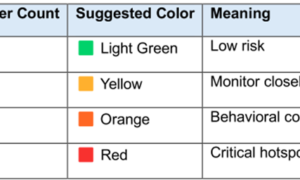The concept of using assets as collateral to secure loans dates back centuries, forming a fundamental principle in the financial sector. Traditionally, physical assets such as real estate, vehicles, or even gold have been used to secure loans. However, with the digital revolution transforming every corner of the financial industry, digital assets, particularly cryptocurrencies, have emerged as a new class of collateral. This transition marks a significant shift in the lending market, offering both innovative opportunities and notable risks.
Historical Context of Collateral in Lending
Collateral serves as a lender’s safety net, providing a fallback in case the borrower fails to meet the repayment obligations. The principle of collateralized lending is based on the notion that secured loans pose less risk, traditionally allowing lenders to offer lower interest rates compared to unsecured loans. Historically, the types of collateral accepted have evolved with economic changes, but the advent of cryptocurrencies has introduced a radical shift in assets considered viable for securing loans.
The Booming Market of Digital Assets
The last decade has seen a meteoric rise in the value and acceptance of digital assets. Cryptocurrencies like Bitcoin and Ethereum have moved from being niche investments to mainstream financial instruments. This surge in value and acceptance has paved the way for these digital assets to be used as collateral. According to industry reports, the market capitalization of cryptocurrencies reached over $2 trillion in 2021, underscoring the massive financial weight these assets have begun to command.
Mechanics of Crypto-Backed Loans
Crypto-backed loans operate under the same basic principle as traditional loans but with cryptocurrency as collateral. When a borrower takes out a crypto-backed loan, they deposit their cryptocurrency into a digital wallet where it is held by the lending platform. The borrower then receives a loan amount typically ranging from 50% to 90% of the cryptocurrency’s current market value. This loan-to-value ratio (LTV) is crucial as it mitigates the risk associated with the high volatility of cryptocurrencies.
The operational model of crypto-backed loans also incorporates the use of smart contracts. These are self-executing contracts with the terms directly written into code, stored on a blockchain. This technology not only reduces the need for intermediaries but also ensures that the transaction and collateral management processes are transparent and tamper-proof.
The Necessity of Crypto as Collateral
The utilization of cryptocurrencies as collateral addresses a significant challenge for asset-rich, cash-poor investors. Typically, these investors hold substantial crypto assets but face liquidity issues since selling their assets would trigger tax events or mean missing out on potential value appreciation. Crypto-backed loans provide a mechanism to unlock the value of their digital assets without requiring them to be sold, thus freeing up capital for other investments or expenses.
Demographics of Crypto-Backed Loan Borrowers
The typical clientele for crypto-backed loans includes long-term crypto investors, day traders, and blockchain startup founders. These individuals are often deeply embedded in the digital economy and prefer leveraging their investments through loans rather than liquidating their holdings. Moreover, high-net-worth individuals with diversified investment portfolios also show increasing interest in these types of loans as part of broader wealth management strategies.
Major Concerns and Red Flags
Despite the benefits, crypto-backed loans carry substantial risks and concerns, primarily due to the volatile nature of digital assets. The primary risk involves the potential for a significant drop in the value of the collateral, which can prompt a margin call. A margin call occurs when the value of the cryptocurrency falls below a certain threshold, requiring the borrower to top up their collateral or repay part of the loan.
Regulatory uncertainty is another major concern. Cryptocurrency regulations vary widely by jurisdiction and are still evolving. This inconsistency can lead to compliance risks and potential legal challenges for both borrowers and lenders.
Furthermore, the security of the digital platforms where cryptocurrencies are held is paramount. The rise in cyber threats and high-profile hacks of crypto exchanges and wallets highlights the need for high security measures to protect these digital assets.
The Rise of Vield in Australia
In Australia, a prominent player, Vield, is setting new standards in the crypto-backed loan industry. Their approach to decentralized finance (DeFi) is making waves due to its unique method of handling cryptocurrency collateral. Unlike traditional models where the collateral might be obscured or potentially used for other purposes, Vield ensures that crypto assets are secured in a transparent wallet. This practice allows borrowers to monitor their collateral continuously, thereby enhancing trust and security in the borrowing process.
The significance of this transparency cannot be understated. In an industry riddled with concerns about the security and usage of digital assets, Vield’s method offers a breath of fresh air. By allowing investors to see their assets at any time, the company not only builds confidence in their services but also fosters a greater understanding and acceptance of DeFi. This approach has profound implications for the liquidity of digital assets, as it reassures both borrowers and lenders about the safety and integrity of their investments.
Johnny Phan, the Co-Founder and CEO of Vield, emphasizes the transformative nature of their services. He states, “At Vield, we’re not just facilitating loans; we’re unlocking financial opportunities. Our platform enables individuals to access funds using their digital assets, which, under traditional systems, might not be possible. This capability is vital as it empowers people to leverage their digital investments without sacrificing their potential long-term gains.”
This philosophy highlights a significant shift in how digital assets are perceived and utilized in the financial sector. By treating cryptocurrencies as viable and valuable assets for collateral, Vield is pioneering a model where digital assets are as instrumental as traditional assets in securing financial services.
The operational transparency associated with Vield’s handling of crypto collateral aligns with the broader principles of DeFi, which prioritize open and fair financial systems without intermediaries. This level of transparency ensures that all transactions are verifiable and that the digital assets held as collateral are neither misused nor leveraged in undisclosed manners.
Alex Dauphin, Co-Founder and COO of Vield, provides a forward-looking perspective on the trajectory of digital assets, especially Bitcoin. He predicts, “Bitcoin’s journey towards becoming a mainstream financial asset is undeniable. We foresee a future where Bitcoin not only grows in value but also achieves a level of price stability unseen in its early years. This stabilization will make it an even more reliable security for loans, paving the way for future wealth to be leveraged against it.”
Dauphin’s prediction touches on an essential aspect of the crypto market’s maturity. As digital assets like Bitcoin become more stable, their appeal as collateral for loans increases, enhancing their utility and integration into traditional financial systems. This evolution is crucial for the broader acceptance and use of cryptocurrencies in everyday financial dealings.
Vield’s innovative approach could potentially set a standard for the industry, encouraging other companies to adopt similar transparent practices. The implications of such a shift are extensive, potentially leading to more strict regulatory frameworks and increased institutional interest in cryptocurrencies as legitimate and stable collateral options.
Moreover, Vield’s strategy addresses one of the major concerns associated with crypto-backed loans: the volatility and security of digital assets. By ensuring that these assets remain visible and untouched except as collateral, Vield mitigates the risk of sudden value drops leading to margin calls, thereby protecting both the borrower and themselves.
The company’s pioneering work in this field is also indicative of a broader trend where digital assets are increasingly woven into the fabric of financial services, offering more flexibility and options to consumers. As digital currencies continue to evolve and gain acceptance, the practices introduced by firms like Vield are likely to play a significant role in shaping the lending industry.
Vield’s innovative use of transparent wallets for securing crypto collateral is a game-changer in the DeFi space. By providing security and visibility, they not only enhance trust in crypto-backed loans but also enable a broader range of people to utilize their digital assets in financially productive ways. This approach could very well lead to a more inclusive, and secure financial market, where digital assets are as commonplace and trusted as traditional securities.
As the financial sector continues to evolve, the use of cryptocurrencies as collateral is becoming increasingly prevalent. This innovative approach to lending not only demonstrates the maturing of the cryptocurrency market but also highlights the shifting paradigms in financial services. However, like any financial innovation, crypto-backed loans come with their own set of risks. Stakeholders must navigate these waters carefully, balancing the promising advantages against the potential pitfalls. As we move forward, the ongoing development of regulatory frameworks and security innovations will be key to the sustainability and growth of crypto-backed lending.





























